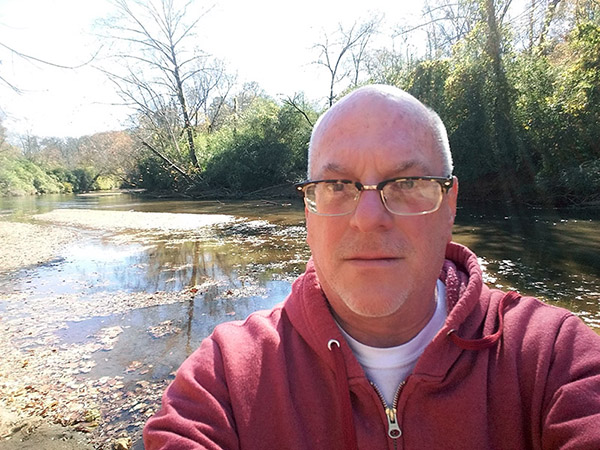Historic Preservation Professor Wayde Brown Publishes Book on Reconstructing Historic Landmarks

Routledge, a British publisher of scholarly works, has just released a book by Wayde Brown, associate professor of historic preservation at UGA CED. Reconstructing Historic Landmarks: Fabrication, Negotiation, and the Past explores ten historic locations in the U.S. and Canada including: New Echota, Georgia; Fort Ticonderoga, New York; La Purisima Mission, California; New Salem, Illinois; Fort Clatsop, Oregon; Fort George, Niagara, Ontario; Graff House, Philadelphia; and Africville Baptist Church, Port Royal Habitation, and Louisburg, Nova Scotia. Looking at how these historic sites have been treated—whether be it to sustain, to challenge, or even subvert a historical narrative, or, with reference to contemporary heritage studies, to reclaim these spaces—Brown explores the very notions of what we mean when we talk about “historic preservation.”
The book was several years in the making and Brown draws on diverse archival sources and site investigations.
He explains: I've long been interested in historic reconstructions—a distinct and sometimes vilified element within the preservation movement— and especially the question of what motivated people to undertake them, and subsequently imbue them with meaning. My PhD dissertation examined the role of reconstructions within Canada, and that research provoked a curiosity about reconstructions in the United States, where there are many more examples, from Atlantic to Pacific, and dating from 1908 to the twenty-first century. In writing this book, I found common themes between the use of reconstructions here and in Canada, something that probably surprises some of my Canadian colleagues.
Two of the sites Brown studied turned out to be especially challenging: New Echota, in northwest Georgia (Gordon County) and Africville Baptist Church in his home province of Nova Scotia, Canada. Both represent the most difficult theme he identified in his research: that we often use historic sites to tell a story we want to hear rather than what it really meant to the people who created it. Brown says New Echota demonstrates a rather blatant example of appropriation of another's past, of using a site to create alternative historical narratives. (This was the capital of the Cherokee nation from 1825 until the forced removal in the 1830s.) Brown has often taken students on field trips there as he sees it as a good place to begin a discussion of how we use history, for good or bad, individually and collectively, consciously or otherwise.
The other challenging site is the Africville Baptist Church, in Nova Scotia, Canada:
Africville was an historic African-Canadian settlement, established by refugee slaves fleeing northward during the War of 1812. In the 1960s, due to social injustice and overt racism, cloaked in the guise of urban renewal, the community was literally bulldozed into the ocean, including the Baptist Church, the heart of Africville. The recent reconstruction of this architecturally-humble building was both a literal and figurative return, a reclamation of the site. Though this is a 'happy story', writing about it took me back to my own past, growing up in Nova Scotia in the 1960s, and seeing Africville, from the backseat of a Studebaker. The past is a complicated, and ultimately personal, thing.
When asked how this book informs his teaching, Brown replies:
Most obviously, my research has broadened my knowledge and understanding of the way in which the larger preservation movement has evolved in the United States. In turn, my courses and thesis advising are better informed. Perhaps more importantly, however, is my increased appreciation for America, and American culture, as the result of the travel I've undertaken for research and site documentation. Although some of this work has been in large centers like Philadelphia and Boston, small town archives and museums have been crucial, and of course many of the sites are in rural areas. In getting to know people in communities such as Astoria, Oregon, Ticonderoga, New York, and Lompoc, California, I've developed a deeper understanding of, and fuller appreciation for, America. In turn, I believe I'm more effective in engaging my students with the many stories of their past.
Wayde Brown has taught at UGA CED since 2002. He holds a master’s degree in architectural conservation from the University of York (England) and a PhD in theory and history of architecture from the Welsh School of Architecture in Cardiff, Wales.
